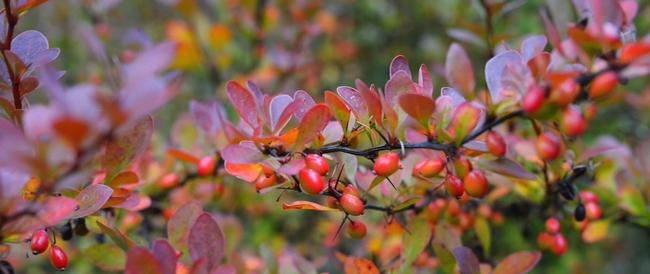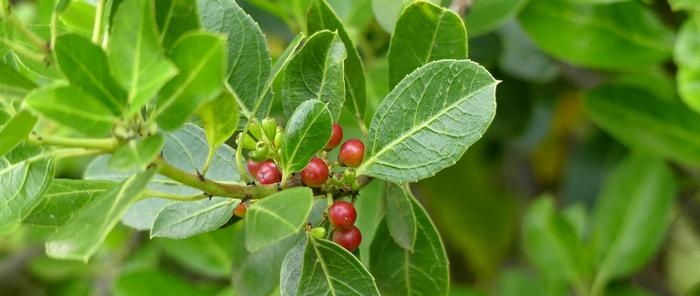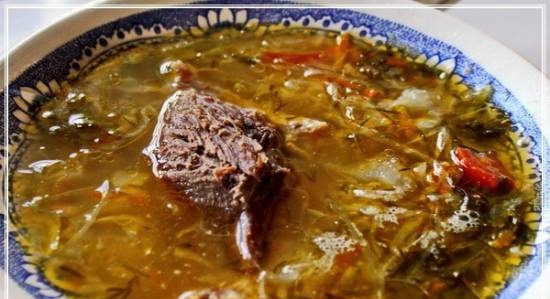|
 Who among us does not like to relax on a river, lake or reservoir, especially when their banks are covered with forest. Alder often settles in such forests, sometimes forming small groves and even a peculiar type of forest - riverbed black alder forests. Pine, linden, birch get along well next to alder, but alder is especially "friendly" with an equally water-loving willow. These rocks, as they say, are alive with water and prefer running water. But they also have water under their care. People have noticed long ago that if the alder groves are cut down, there will be trouble: springs dry up, ground waters go away, rivers become shallow ... Who among us does not like to relax on a river, lake or reservoir, especially when their banks are covered with forest. Alder often settles in such forests, sometimes forming small groves and even a peculiar type of forest - riverbed black alder forests. Pine, linden, birch get along well next to alder, but alder is especially "friendly" with an equally water-loving willow. These rocks, as they say, are alive with water and prefer running water. But they also have water under their care. People have noticed long ago that if the alder groves are cut down, there will be trouble: springs dry up, ground waters go away, rivers become shallow ...
Perhaps no other breed forms in its pure form such dark, gloomy, melancholy plantings as alder. But its small groves and individual trees somewhere on the riverbank are a very beautiful sight.
 The tree grows quickly, especially if the soil is rich. But sand and clay are not afraid of her - alder also settles here, and even one of the first. Near alder, on humus-rich soils, you can often find hazel, raspberry, chisel and other forest and meadow plants. It is not for nothing that they say in Finland: "Alder roots will grow the grass", but here: "Where alder is a heap of hay." The reclaimed alder lands have been valued by farmers for a long time. They are often called "cucumber soil" because cucumbers and other garden crops grow well on it. The tree grows quickly, especially if the soil is rich. But sand and clay are not afraid of her - alder also settles here, and even one of the first. Near alder, on humus-rich soils, you can often find hazel, raspberry, chisel and other forest and meadow plants. It is not for nothing that they say in Finland: "Alder roots will grow the grass", but here: "Where alder is a heap of hay." The reclaimed alder lands have been valued by farmers for a long time. They are often called "cucumber soil" because cucumbers and other garden crops grow well on it.
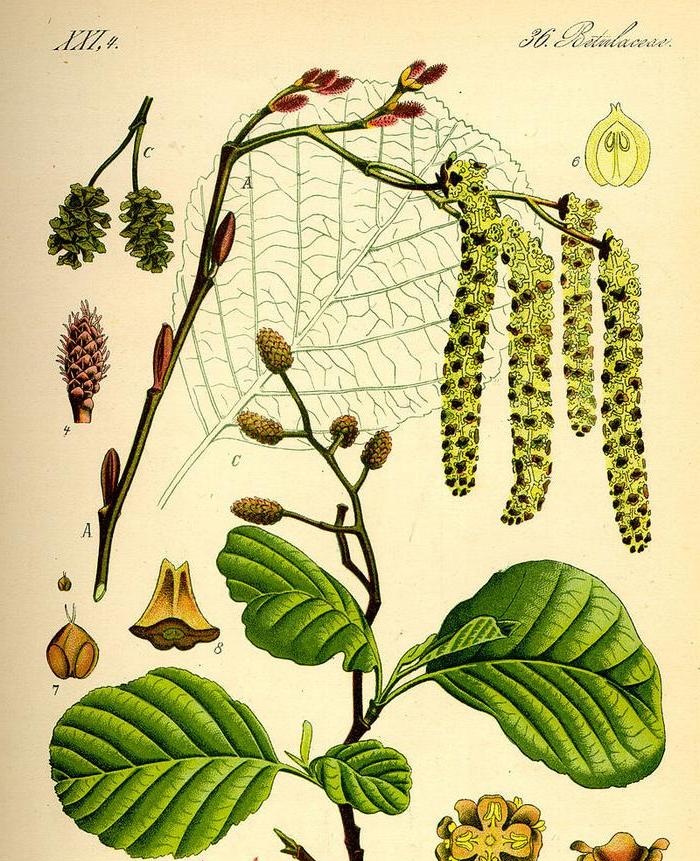 Alder blooms one of the first tree species together with hazel. There is not even a trace of foliage, but earrings-inflorescences are already hanging from the dark branches. Alder is a monoecious tree, that is, on the same tree there are both modest reddish female inflorescences and spectacular male ones, similar to fluffy brown caterpillars. After pollination, male catkins lose their beauty, dry up and fall off, covering the ground under the trunks. By autumn, female inflorescences turn into lignified "bumps", inside which are single-seeded dipteran nuts. They are in cones until spring. Only in March - April, shortly before flowering, do the cones open and winged fruit are carried by the wind or water streams. But alder reproduces not only by seeds, but also by shoots. If you cut down an adult tree, then the next year the stump remaining instead of the trunk will literally drown in a mass of powerful shoots that reach a length of two meters. However, coppice trees do not have the appearance, size, or durability of alder grown from seed. And the alder does not live so long in comparison with other species - 100 years, and more often - 60-80. Alder blooms one of the first tree species together with hazel. There is not even a trace of foliage, but earrings-inflorescences are already hanging from the dark branches. Alder is a monoecious tree, that is, on the same tree there are both modest reddish female inflorescences and spectacular male ones, similar to fluffy brown caterpillars. After pollination, male catkins lose their beauty, dry up and fall off, covering the ground under the trunks. By autumn, female inflorescences turn into lignified "bumps", inside which are single-seeded dipteran nuts. They are in cones until spring. Only in March - April, shortly before flowering, do the cones open and winged fruit are carried by the wind or water streams. But alder reproduces not only by seeds, but also by shoots. If you cut down an adult tree, then the next year the stump remaining instead of the trunk will literally drown in a mass of powerful shoots that reach a length of two meters. However, coppice trees do not have the appearance, size, or durability of alder grown from seed. And the alder does not live so long in comparison with other species - 100 years, and more often - 60-80.
 The tree is distinguished by its exceptional frost resistance. Not only mature trees, but also its seedlings are not afraid of low temperatures and can withstand 40-50-degree frosts. Isn't this the saying: The tree is distinguished by its exceptional frost resistance. Not only mature trees, but also its seedlings are not afraid of low temperatures and can withstand 40-50-degree frosts. Isn't this the saying:
Before the alder and frost, he takes off his hat.
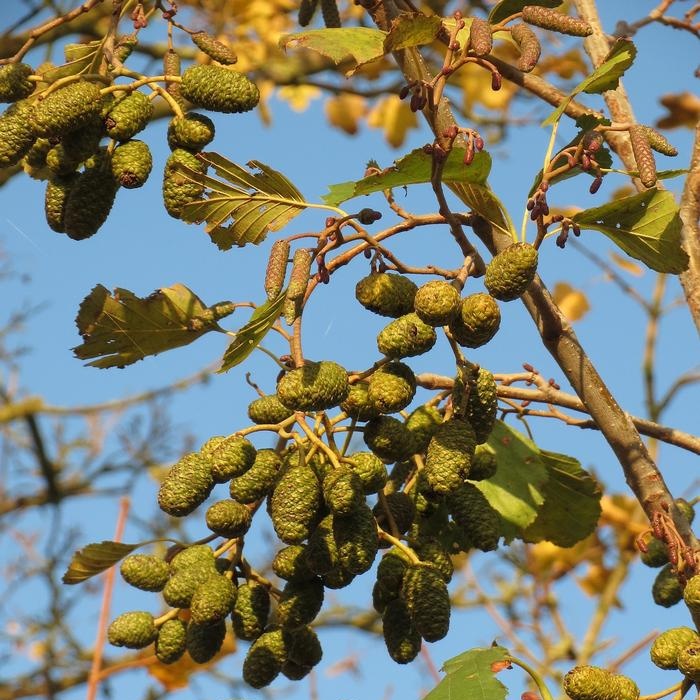 Black alder is considered a good land reclamation species, and it is recommended to plant it where it is necessary to protect the coast from destruction. It finds application in ornamental gardening, where there are numerous forms of it: pyramidal, fringed-dissected, mountain ash and yellow-leaved. It should be remembered, however, that decorative alder forms should also be planted near water. Black alder is considered a good land reclamation species, and it is recommended to plant it where it is necessary to protect the coast from destruction. It finds application in ornamental gardening, where there are numerous forms of it: pyramidal, fringed-dissected, mountain ash and yellow-leaved. It should be remembered, however, that decorative alder forms should also be planted near water.
Wild ungulates feed on leaves and shoots, and birds feed on seeds. Pollen is loved ... by fish. One earring contains about four million pollen grains, and there are several thousand earrings on one tree! During flowering, pollen forms a thick layer in places on the surface of the water. It is this pollen that fish feeds on.
Previously, alder wood was used to make furniture and house construction. Rapidly deteriorating under normal conditions, wood is very durable in water and therefore has long been used by humans for the construction of dams and various underwater structures. So, in Venice almost all houses are built on black alder piles.
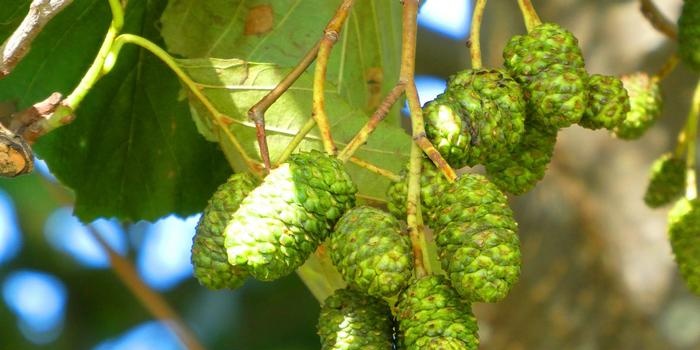 Currently, the wood of this tree is used for the manufacture of wooden dishes, containers, plywood. Barrels and crates are of exceptional quality. They are not afraid of dampness, insects do not start in them, and most importantly, they do not give foreign odors to goods and products. Currently, the wood of this tree is used for the manufacture of wooden dishes, containers, plywood. Barrels and crates are of exceptional quality. They are not afraid of dampness, insects do not start in them, and most importantly, they do not give foreign odors to goods and products.
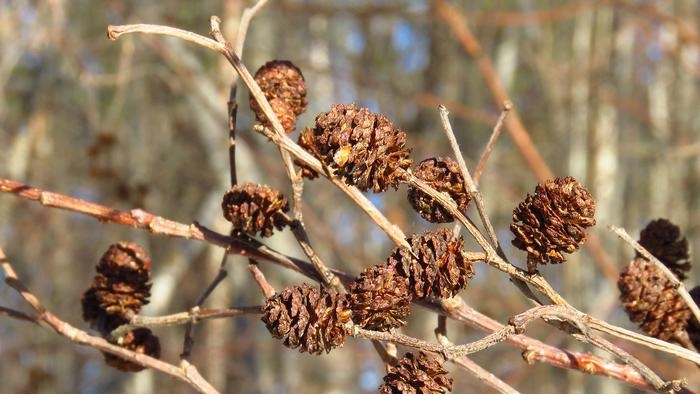 Craftsmen can turn alder into mahogany and ebony by special processing (painting, impregnation, polishing). By chemical processing of shoots, bark and leaves, paints are obtained, and by dry distillation of wood - vinegar... For a long time, to obtain paint, small shavings of bark were insisted for a day or two in water, then the infusion was filtered and the canvases were boiled in it, which then turned brown, which did not change over time. Nowadays, chemists get not only brown, but also black, red, yellow colors, adding various substances to the natural infusions of the bark. Craftsmen can turn alder into mahogany and ebony by special processing (painting, impregnation, polishing). By chemical processing of shoots, bark and leaves, paints are obtained, and by dry distillation of wood - vinegar... For a long time, to obtain paint, small shavings of bark were insisted for a day or two in water, then the infusion was filtered and the canvases were boiled in it, which then turned brown, which did not change over time. Nowadays, chemists get not only brown, but also black, red, yellow colors, adding various substances to the natural infusions of the bark.
The bark and cones are rich not only in coloring, but also in tannins. Skins were tanned with infusions, ropes and fishing tackle were processed. Another feature of the tree has long been noticed by people. If a bear started up in the garden, eating up roots and tubers, then it was necessary to poke into the beds of alder branches, and the pest disappeared. I don't like the smell of alder and mice.
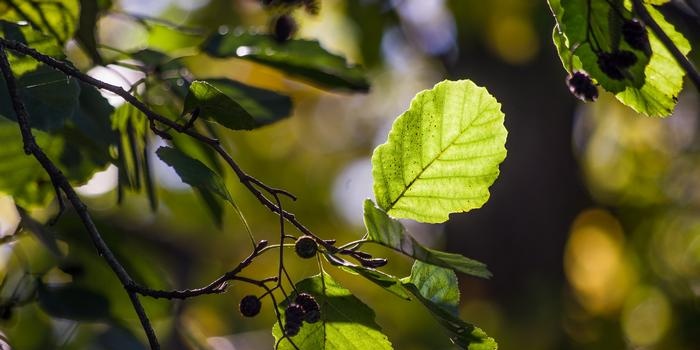 For medicinal purposes, bark, leaves, earrings, and cones have long been used. So, the leaves were considered anti-cold and diaphoretic. It turned out that they contain a lot of salicyl, which is the basis of acetylsalicylic acid, or, simply put, aspirin. Modern medicine uses the dry extract of alder fruits as a hemostatic and gastric agent. For medicinal purposes, bark, leaves, earrings, and cones have long been used. So, the leaves were considered anti-cold and diaphoretic. It turned out that they contain a lot of salicyl, which is the basis of acetylsalicylic acid, or, simply put, aspirin. Modern medicine uses the dry extract of alder fruits as a hemostatic and gastric agent.
Alder is an ancient plant, its fossil remains are found in the Cretaceous deposits. Currently, there are more than 30 species of this tree, which are distributed mainly in the Northern Hemisphere, found in Europe, the mountains of North Africa, Southeast Asia, as well as in North and South America. The ancestors that gave rise to all modern species of alder survived in the Himalayas and the mountains of Southwest China. Gray alder grows there. This relict species forms either undergrowth in pine forests, or pure stands at an altitude of 1200-1500 m.
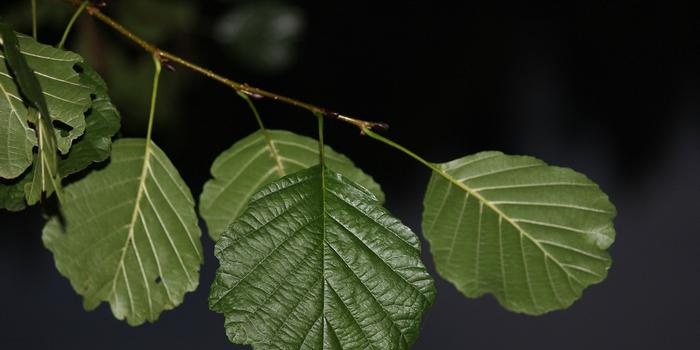 Another relict species - almost heart-shaped alder - belongs to rare plants. Found only in the Talysh mountains. This tree, which is of great shore protection value, is felled for its valuable timber. Protected in the Hyrkan Nature Reserve. Another relict species - almost heart-shaped alder - belongs to rare plants. Found only in the Talysh mountains. This tree, which is of great shore protection value, is felled for its valuable timber. Protected in the Hyrkan Nature Reserve.
S. G. Andreev
|
 Who among us does not like to relax on a river, lake or reservoir, especially when their banks are covered with forest. Alder often settles in such forests, sometimes forming small groves and even a peculiar type of forest - riverbed black alder forests. Pine, linden, birch get along well next to alder, but alder is especially "friendly" with an equally water-loving willow. These rocks, as they say, are alive with water and prefer running water. But they also have water under their care. People have noticed long ago that if the alder groves are cut down, there will be trouble: springs dry up, ground waters go away, rivers become shallow ...
Who among us does not like to relax on a river, lake or reservoir, especially when their banks are covered with forest. Alder often settles in such forests, sometimes forming small groves and even a peculiar type of forest - riverbed black alder forests. Pine, linden, birch get along well next to alder, but alder is especially "friendly" with an equally water-loving willow. These rocks, as they say, are alive with water and prefer running water. But they also have water under their care. People have noticed long ago that if the alder groves are cut down, there will be trouble: springs dry up, ground waters go away, rivers become shallow ... The tree grows quickly, especially if the soil is rich. But sand and clay are not afraid of her - alder also settles here, and even one of the first. Near alder, on humus-rich soils, you can often find hazel, raspberry, chisel and other forest and meadow plants. It is not for nothing that they say in Finland: "Alder roots will grow the grass", but here: "Where alder is a heap of hay." The reclaimed alder lands have been valued by farmers for a long time. They are often called "cucumber soil" because cucumbers and other garden crops grow well on it.
The tree grows quickly, especially if the soil is rich. But sand and clay are not afraid of her - alder also settles here, and even one of the first. Near alder, on humus-rich soils, you can often find hazel, raspberry, chisel and other forest and meadow plants. It is not for nothing that they say in Finland: "Alder roots will grow the grass", but here: "Where alder is a heap of hay." The reclaimed alder lands have been valued by farmers for a long time. They are often called "cucumber soil" because cucumbers and other garden crops grow well on it. Alder blooms one of the first tree species together with hazel. There is not even a trace of foliage, but earrings-inflorescences are already hanging from the dark branches. Alder is a monoecious tree, that is, on the same tree there are both modest reddish female inflorescences and spectacular male ones, similar to fluffy brown caterpillars. After pollination, male catkins lose their beauty, dry up and fall off, covering the ground under the trunks. By autumn, female inflorescences turn into lignified "bumps", inside which are single-seeded dipteran nuts. They are in cones until spring. Only in March - April, shortly before flowering, do the cones open and winged fruit are carried by the wind or water streams. But alder reproduces not only by seeds, but also by shoots. If you cut down an adult tree, then the next year the stump remaining instead of the trunk will literally drown in a mass of powerful shoots that reach a length of two meters. However, coppice trees do not have the appearance, size, or durability of alder grown from seed. And the alder does not live so long in comparison with other species - 100 years, and more often - 60-80.
Alder blooms one of the first tree species together with hazel. There is not even a trace of foliage, but earrings-inflorescences are already hanging from the dark branches. Alder is a monoecious tree, that is, on the same tree there are both modest reddish female inflorescences and spectacular male ones, similar to fluffy brown caterpillars. After pollination, male catkins lose their beauty, dry up and fall off, covering the ground under the trunks. By autumn, female inflorescences turn into lignified "bumps", inside which are single-seeded dipteran nuts. They are in cones until spring. Only in March - April, shortly before flowering, do the cones open and winged fruit are carried by the wind or water streams. But alder reproduces not only by seeds, but also by shoots. If you cut down an adult tree, then the next year the stump remaining instead of the trunk will literally drown in a mass of powerful shoots that reach a length of two meters. However, coppice trees do not have the appearance, size, or durability of alder grown from seed. And the alder does not live so long in comparison with other species - 100 years, and more often - 60-80. The tree is distinguished by its exceptional frost resistance. Not only mature trees, but also its seedlings are not afraid of low temperatures and can withstand 40-50-degree frosts. Isn't this the saying:
The tree is distinguished by its exceptional frost resistance. Not only mature trees, but also its seedlings are not afraid of low temperatures and can withstand 40-50-degree frosts. Isn't this the saying: Black alder is considered a good land reclamation species, and it is recommended to plant it where it is necessary to protect the coast from destruction. It finds application in ornamental gardening, where there are numerous forms of it: pyramidal, fringed-dissected, mountain ash and yellow-leaved. It should be remembered, however, that decorative alder forms should also be planted near water.
Black alder is considered a good land reclamation species, and it is recommended to plant it where it is necessary to protect the coast from destruction. It finds application in ornamental gardening, where there are numerous forms of it: pyramidal, fringed-dissected, mountain ash and yellow-leaved. It should be remembered, however, that decorative alder forms should also be planted near water. Currently, the wood of this tree is used for the manufacture of wooden dishes, containers, plywood. Barrels and crates are of exceptional quality. They are not afraid of dampness, insects do not start in them, and most importantly, they do not give foreign odors to goods and products.
Currently, the wood of this tree is used for the manufacture of wooden dishes, containers, plywood. Barrels and crates are of exceptional quality. They are not afraid of dampness, insects do not start in them, and most importantly, they do not give foreign odors to goods and products. Craftsmen can turn alder into mahogany and ebony by special processing (painting, impregnation, polishing). By chemical processing of shoots, bark and leaves, paints are obtained, and by dry distillation of wood -
Craftsmen can turn alder into mahogany and ebony by special processing (painting, impregnation, polishing). By chemical processing of shoots, bark and leaves, paints are obtained, and by dry distillation of wood -  For medicinal purposes, bark, leaves, earrings, and cones have long been used. So, the leaves were considered anti-cold and diaphoretic. It turned out that they contain a lot of salicyl, which is the basis of acetylsalicylic acid, or, simply put, aspirin. Modern medicine uses the dry extract of alder fruits as a hemostatic and gastric agent.
For medicinal purposes, bark, leaves, earrings, and cones have long been used. So, the leaves were considered anti-cold and diaphoretic. It turned out that they contain a lot of salicyl, which is the basis of acetylsalicylic acid, or, simply put, aspirin. Modern medicine uses the dry extract of alder fruits as a hemostatic and gastric agent. Another relict species - almost heart-shaped alder - belongs to rare plants. Found only in the Talysh mountains. This tree, which is of great shore protection value, is felled for its valuable timber. Protected in the Hyrkan Nature Reserve.
Another relict species - almost heart-shaped alder - belongs to rare plants. Found only in the Talysh mountains. This tree, which is of great shore protection value, is felled for its valuable timber. Protected in the Hyrkan Nature Reserve.